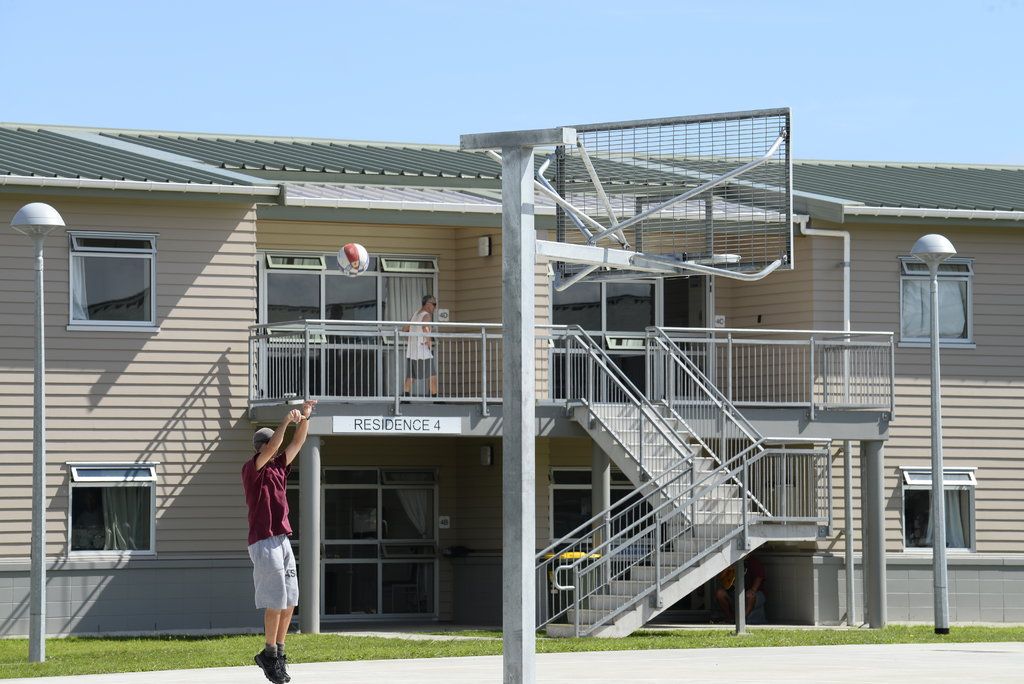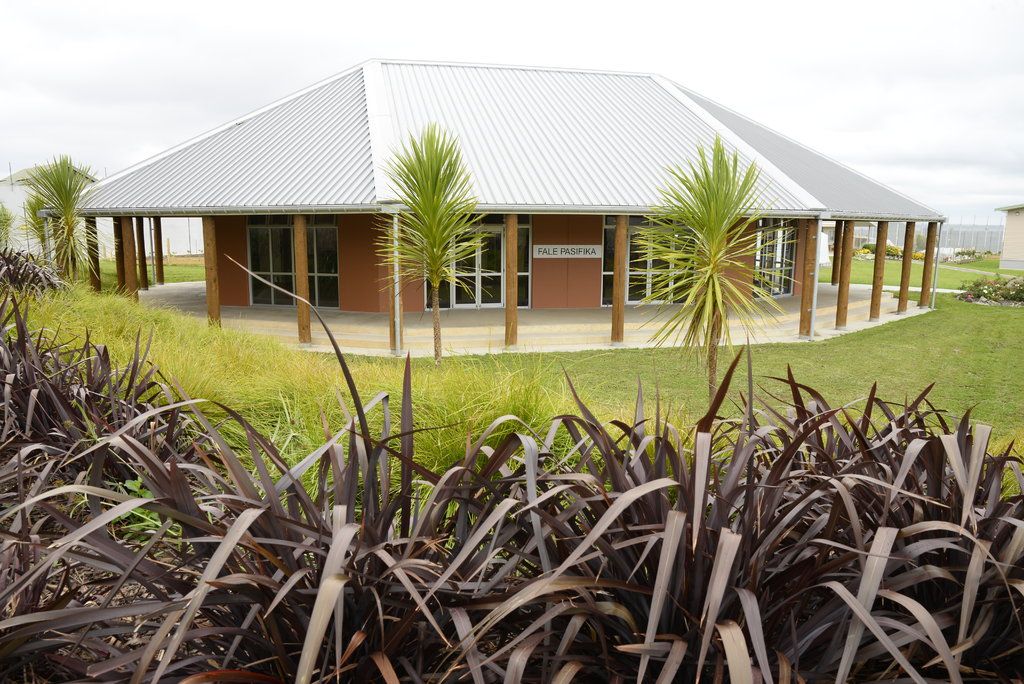About 35 years ago, America began turning prisons over to the private sector. The idea was that private prisons would be better and cheaper than government-run ones. “The great incentive for us, and we believe the long-term great incentive for the private sector, will be that you will be judged on performance,” Thomas Beasley said on “60 Minutes” in 1984. Mr. Beasley was president of the newly created Corrections Corporation of America.
Today about 9 percent of those behind bars in 28 states and in federal prisons — more than 128,000 people — are in prisons run by the private sector. More than half of all private prison beds are owned by CoreCivic, the new name for Mr. Beasley’s company. In addition to prisoners, about 70 percent of detainees in Immigration and Customs Enforcement custody are in private facilities.
But private prisons have turned out to be neither better nor cheaper. They have about the same recidivism rates as their government-run counterparts — nearly 40 percent. And the Government Accountability Office has concluded time and again that there is simply no evidence that private prisons are more cost-effective than public prisons.
Private prisons have come under tremendous political scrutiny because the more people they house, the more they profit. Most corrections contracts with the private sector merely ask the private operator to replicate what the government is doing.
Given how entrenched the private sector is in American corrections, the private prison industry is here to stay. But there are ways to improve these institutions. Currently they are rewarded according to the number of prisoners they house. What if private prison contracts were structured so that they made more money if they treated prisoners humanely with policies that helped them stay out of trouble once released? Prisons exist to lower crime rates. So why not reward private prisons for doing that? Judge them on performance, as Mr. Beasley said.
America doesn’t use performance-based contracts. But Australia and New Zealand are experimenting with these models. Two relatively new private prisons have contracts that give them bonuses for doing better than government prisons at cutting recidivism. They get an even bigger bonus if they beat the government at reducing recidivism among their indigenous populations. And prison companies are charged for what the government deems as unacceptable events like riots, escapes and unnatural deaths.
Although the contracts set specific objectives, they do not dictate how prison operators should achieve them. “If we want to establish a prison that focuses on rehabilitation and reintegration, we have to give the private sector the space to innovate,” said Rachael Cole, a former public-private partnership integration director for the New Zealand Department of Corrections. “If we don’t give them the opportunity to do things differently, we will just get back what we already have.”
I recently visited New Zealand’s Auckland South Corrections Facility, a low-lying yellow and white brick structure in the shadow of the local airport. It houses 970 men and avoids many of the dehumanizing elements typical of prisons. Prisoners are called by their first names instead of by number, and corrections officers are called reintegration officers.
Serco, a British company that operates prisons globally, manages the facility for the New Zealand Department of Corrections under the country’s first public-private prison partnership. Men who follow the rules, complete educational and vocational programs, and keep a positive attitude can move from the more traditional housing units into six-room cottages designed to prepare them for life outside prison. The residences, which house almost a quarter of the prison’s population, resemble dorm-room suites with desks and bookshelves in the bedrooms, carpeted living spaces, couches, windows without bars, microwaves, refrigerators, cooking utensils and a flat-screen TV. The men cook their own meals and do their own laundry.
Even those who live in more conventional cells manage their own affairs through a computer system to schedule family visits, medical appointments and their daily responsibilities. Each prisoner has a résumé and is expected to apply and be interviewed for jobs at the facility. The prison also responds to the job market. Noticing the growth in barista careers, Serco opened two cafes in the prison to provide on-the-job training.
New Zealand’s prison population has soared in recent years, reaching an all-time high of more than 10,600. The country also struggles with racial disparities, with an overrepresentation of Maori — the nation’s indigenous Polynesian people — in their prisons. Maori make up only about 15 percent of the country’s population but half of New Zealand’s prisoners. Aiming to reduce the Maori’s recidivism rate, Serco and its partners worked with indigenous groups to build a cultural center for the Maori prisoners at the Auckland South prison. When I visited, one Maori prisoner, a bald, bearded man dressed in the prison uniform of gray shorts and a burgundy shirt, was cleaning the cultural center to prepare it for a meeting. He said that the center hosts events like the Maori New Year celebration and that family members frequently join.
“The prison is designed for rehabilitation,” said Oliver Brousse, chief executive of the John Laing Investment Group, a member of the consortium that built Auckland South. “The strength of these public-private partnerships is that they bring the best practices and innovation from all over the world, allowing local authorities to benefit from not only private capital but also from the best people and best practices from other countries.”
In Australia, the Ravenhall Correctional Center near Melbourne is a 1,000-bed medium-security facility with 51 buildings spread across six acres. There is no razor wire. The prison is operated by the GEO Group, a global prison firm (with most of its facilities in the United States), under a partnership with the Victoria state government. Men live in five communities in small buildings similar to college dorms. Social workers and other clinicians meet with the men inside the communities; overall, the prison has more than 70 clinical programs. When I visited, a group of men whose good behavior had allowed them to progress to living in four-bedroom suites were making sandwiches for lunch and contemplating stir-fry for dinner.
“What makes Ravenhall different is that I didn’t think of it much as a jail,” said a man named Cameron, who was released in April and now works as a landscaper for Rebuild, a Y.M.C.A. program that trains prisoners in construction work and hires some of them when they leave the prison. “It is a place to be if you really want to change. You had to either be in a program or in education. You can’t just stay in the cottage and do nothing.”
Even the men who haven’t yet made it to these cottages live in more humane quarters than exist in most American prisons. Instead of bars on windows, there is thick glass, providing more natural light and a better view of the outside.
As in New Zealand, indigenous people in Australia are overrepresented in the prison system. Aboriginal and Torres Strait Islanders are only 2 percent of the adult population but account for more than a quarter of the incarcerated population. Ravenhall has six staff members who work primarily with indigenous prisoners to reconnect them with their cultural heritage. The programs also help the men to be better fathers and to recover from trauma.
The GEO Group decided that to cut recidivism, it needed to continue working with prisoners once they were out. At the Bridge Center, families meet with social workers to discuss what life could be like when their loved ones leave prison and return home. And those released from Ravenhall can meet with the same clinicians they might have bonded with while incarcerated, work with staff to find housing and in some cases receive vouchers to cover three months’ rent.
These prisons are so new — Ravenhall opened less than a year ago — that we don’t yet know if the system works, but corrections departments in both countries are optimistic. Auckland South opened in 2015, and an evaluation of Auckland South’s initial success in reducing recidivism will likely be released later this year.
If the prisons in Australia and New Zealand prove successful, could a similar approach work in the United States? It would require getting beyond simplistic views of private prisons, recognizing that their failures could be a result of the incentives they receive. And it would involve a leap of faith to allow the private sector some flexibility in how it chooses to reduce recidivism.
“This partnership is about moving away from the prescribed way of doing things,” said Jeremy Lightfoot, deputy chief executive of the New Zealand Department of Corrections, told me in his office in Wellington in July. “This prison is in our network. If it is succeeding, then we are succeeding.”
In America, the government tends to rely on the private sector only when it needs capital. In Australia and New Zealand, governments partnered with private industry to design the contracts themselves and fashion innovative practices to reduce recidivism.
“What you have to realize is that we are human beings as well,” Cameron said. “If you put the boys in the cage and treat the boys like an animal, they will think they are animals. But if you put them in an environment where things are peaceful and they are treated like humans, they can change.”

